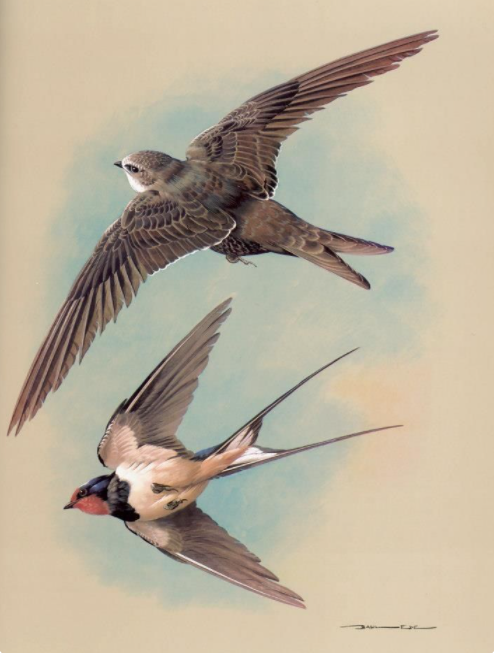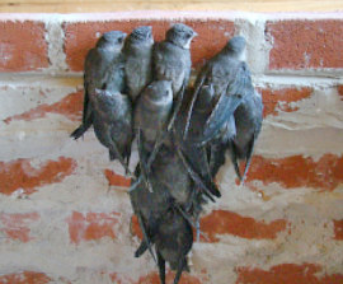Chimney Swift Runaway
By Effie Lee Newsome
Annotations by Karen Kilcup

He looked like a closed umbrella[1] Some fairy elf had swung With the little end turned upward— That was the way he hung, Clasping my curtains with all his might, Quivering like ferns in his funny fright. He’d dropped from his chimney nursery, And tried to fly through My tin kitchen flue.[2] I heard his wings lash, And, quick as a flash, I pulled off the tin And let him fly in. The new scenes made him quite uncertain, That’s why he held fast to the curtain Till I’d unhooked his claws with care And turned him free to take the air.
Newsome, Effie Lee. “Chimney Swift Runaway.” Gladiola Garden: Poems of Outdoors and Indoors for Second Grade Readers. Washington, DC: Associated Publishers, 1940, 80.
[1] Chimney swifts are small birds that nest on vertical surfaces like chimneys and flues. Federally protected, they are famous fliers and often chatter when they are aloft. They travel thousands of miles from their winter homes in Peru to breed in North America during the summer.
[2] A flue takes stove exhaust from the house.
Contexts
Newsome worked among the many celebrated writers of the Harlem Renaissance, who included Langston Hughes, Countee Cullen, James Weldon Johnson, Zora Neale Hurston, and Anne Spencer, many of them poets. Among her noteworthy contributions to that movement was her writing and editing for W. E. B. Du Bois’s magazine, The Crisis, the official publication of the NAACP (National Association for the Advancement of Colored People). As John Claborn points out, Du Bois’s political goals embraced the idea of access to natural spaces, and the magazine featured environmental writing by such notable authors as Arna Bontemps, Claude McKay, and Hughes. Newsome contributed to and edited “The Little Page” (“Whimsies for the Younger Folk”), where much of her work emphasized nature. This poem, like many others in The Envious Lobster, whimsically enacts a natural history lesson and speaks to animal welfare.
Resources for Further Study
- Claborn, John. “The Crisis, the Politics of Nature, and the Harlem Renaissance: Effie Lee Newsome’s Eco-poetics.” Civil Rights and the Environment in African-American Literature, 1895-1941. New York: Bloomsbury Academic, 2017.
- “Effie Lee Newsome, 1885-1978.” Poets.org. This site provides access to seven of Newsome’s poems.
- Newsome, Effie Lee. Gladiola Garden: Poems of Outdoors and Indoors for Second Grade Readers. Courtesy of the New York Public Library, this site provides access to the entire text.
Contemporary Connections
Anonymous. Reading of Newsome’s poem, “The Bronze Legacy.” The illustrations for Gladiola Garden were done by prominent Black artist Loïs Mailou Jones (1905-1998).
Johnston, Amber O’Neal. “African American Poetry: Effie Lee Newsome. Heritage Mom blog.
